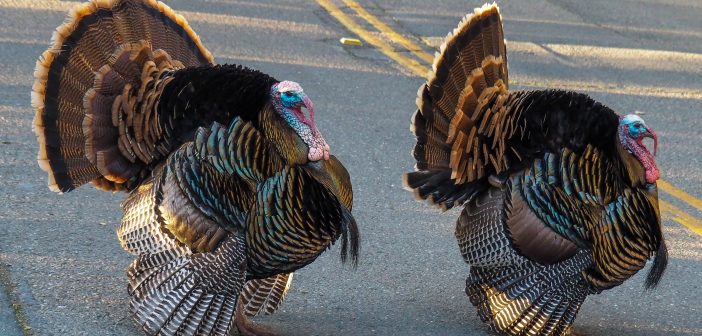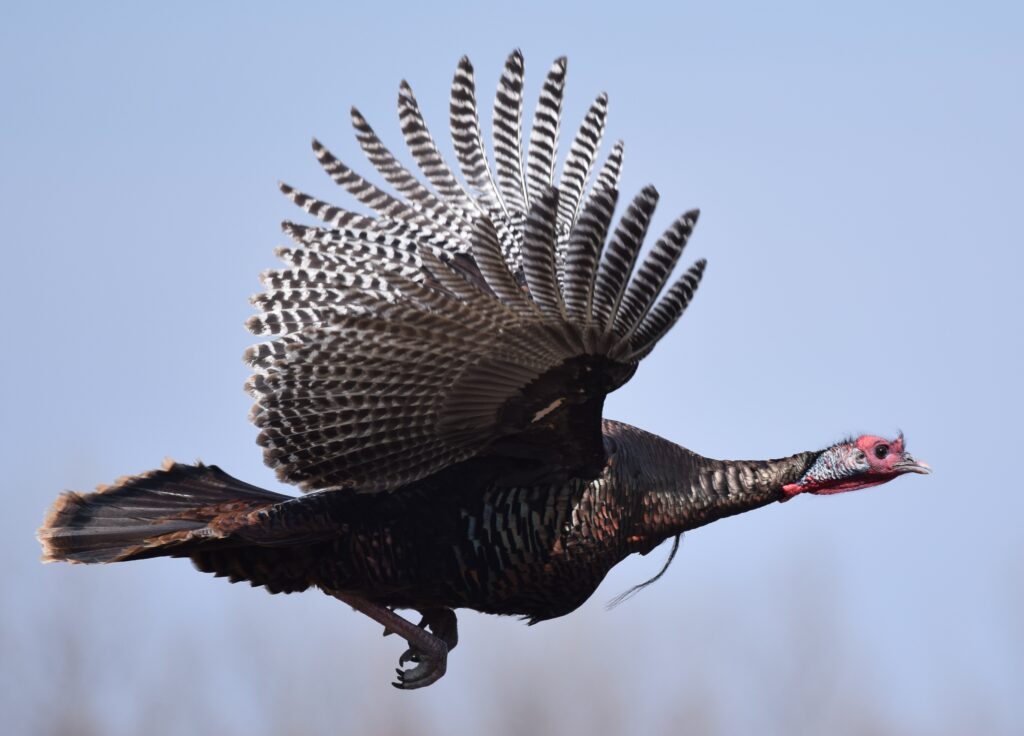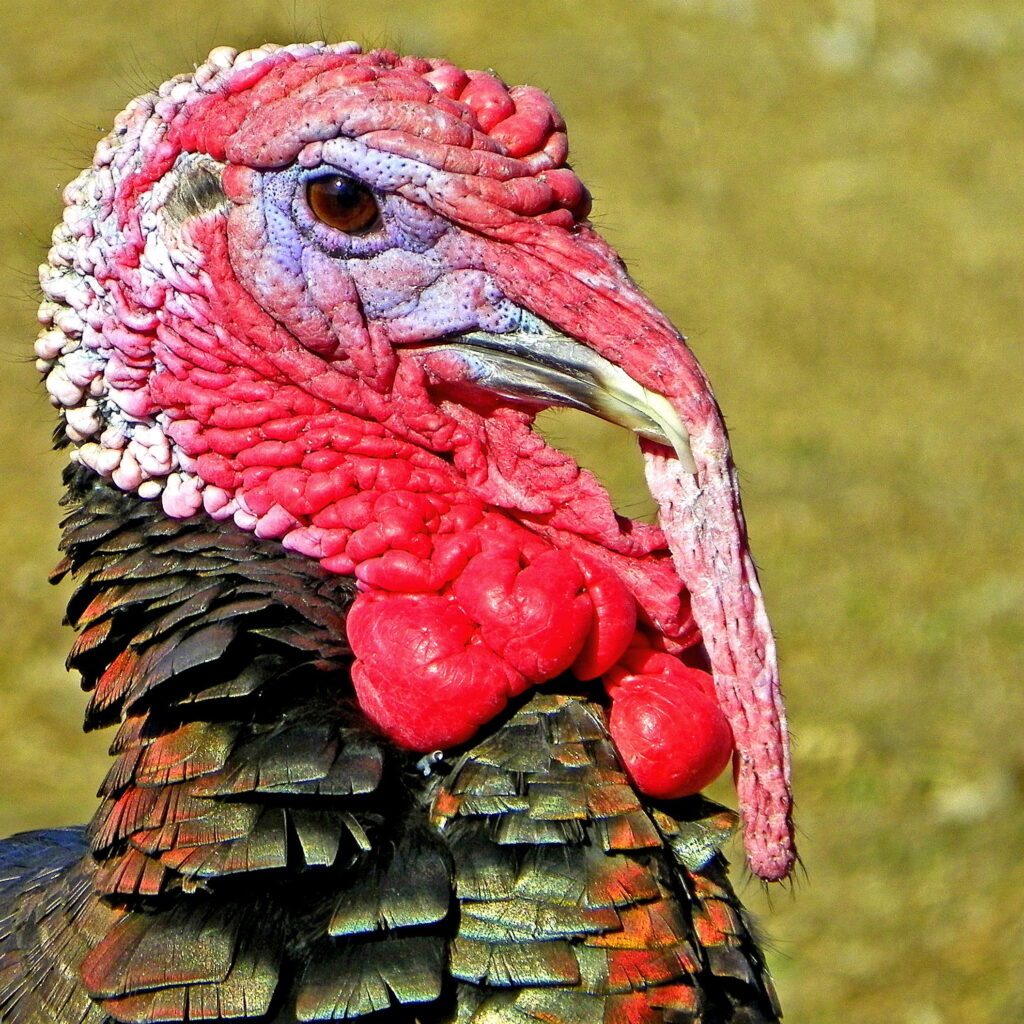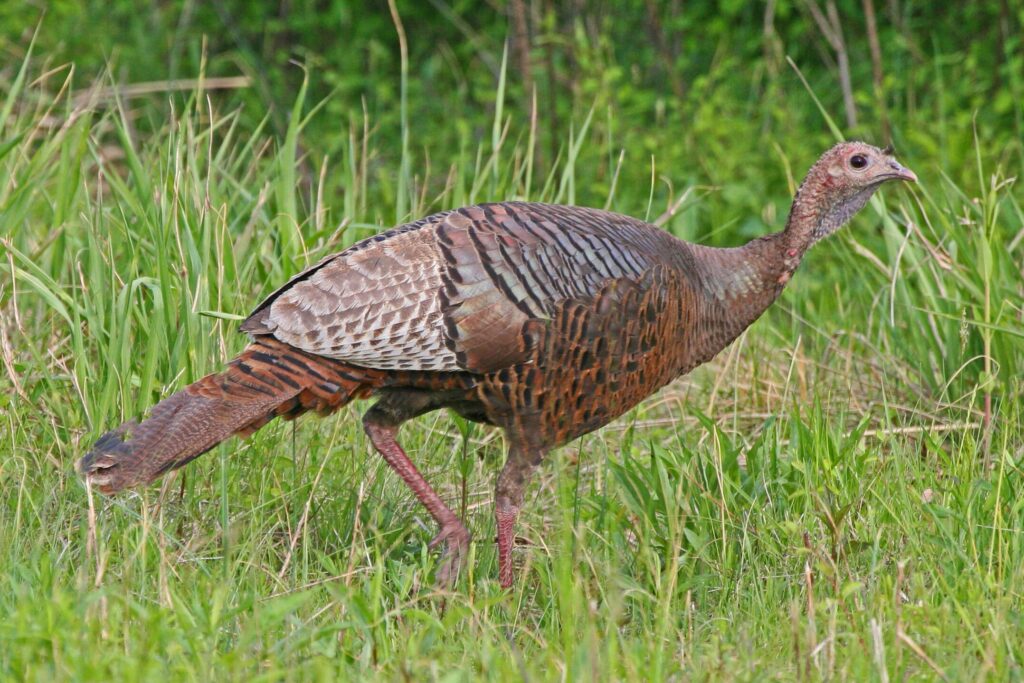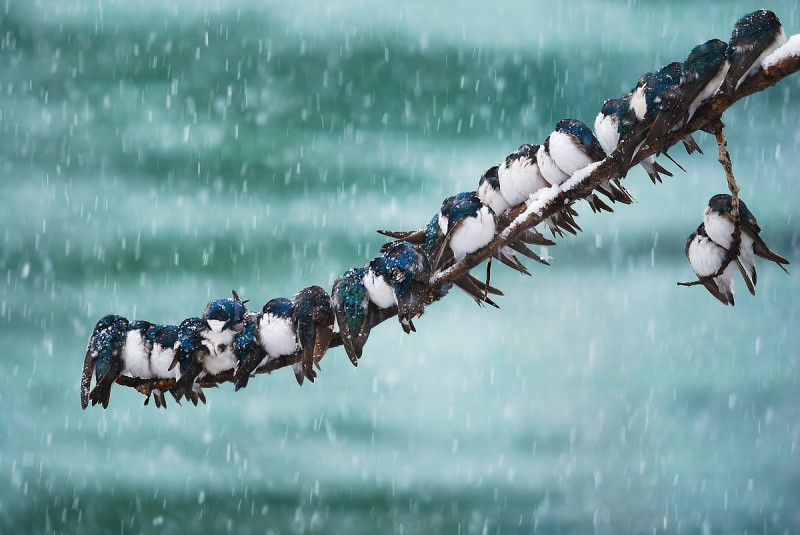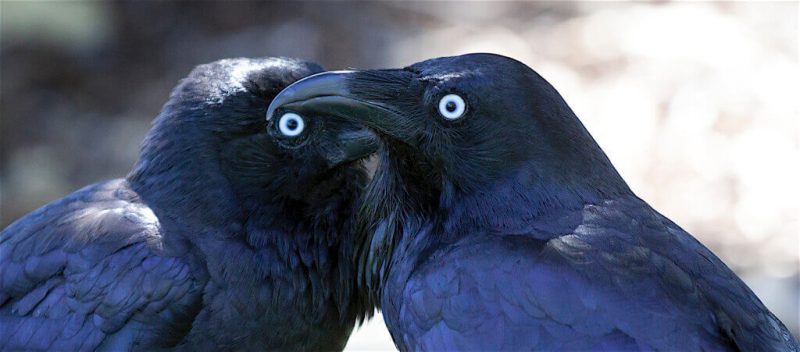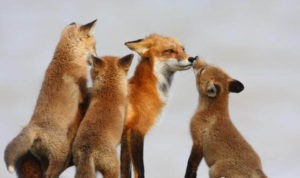Most people are used to a factory-raised turkey that’s roasted, carved up, and lying on dinner plates. So it’s easy to forget there are Wild Turkeys that live in, well, the wild.
Wild Turkeys, Meleagris gallopavo, are very different from the domestic turkeys destined to be centerpieces on about forty-five million dinner tables each Thanksgiving week. Bred for size and large, meaty breasts, domestic turkeys can’t lift themselves off the ground into flight. Most of their intelligence has become collateral damage as breeders focus only on what appeals to grocery shoppers.
Wild Turkeys, on the other hand, are birds to be reckoned with. They’re sleek, intelligent, and cunning. They can run at 25 miles per hour (40 kph) and fly at 55 miles per hour (88.5 kph). And they can swim!
Unlike turkeys on factory farms, which exist on corn, feed mixes, and daily doses of antibiotics to make them fat, Wild Turkeys get to enjoy acorns, nuts, wild berries, fruits, and insects. Their average lifespan is about three years, but they can live up to 10 years or more (one lived 13 years). On the other hand, factory turkeys are slaughtered at around five months.
What’s up with that headdress?
Have you ever wondered what’s up with all the strange stuff on their head and neck? Well, as it happens, so have scientists! They have names for those messy-looking bits but don’t know if they’re mainly for show or play some additional role. The red and white growths on the head and neck are called caruncles. The long, fleshy gob hanging over the beak is a snood. Hanging from the neck are loose flaps of skin called the dewlap, or wattle.
Courting males dramatically display themselves with ruffled feathers and fanned-out tail feathers. The caruncles, snood, wattle, and bare skin on the head and neck become engorged with blood, and the head turns blue. That is unless they’re squaring off for a fight, then it turns red. They also have a “beard,” a long cluster of feathers hanging from the center of their chest (females sometimes have them, too.) Males are known for their loud gobbling sound, capable of being heard a mile away. Females can gobble, too, but rarely do.
Born to be free
Wild Turkeys are large, plump, and powerful, with males weighing up to 24 pounds (10.9 kg) and standing 3.0– 3.5 feet (0.9 cm) tall. Their senses are superb, with hearing ten times better than a human’s and sharp, nearly 360-degree vision. They’re irregularly migratory, socially complex birds that travel in flocks. They roost in trees at night but spend most of the daytime on the ground. They often communicate with each other; hens even cluck at their chicks while they’re still in the eggs. Chicks know their mother’s voice before they hatch and are ready to listen and move about with her soon after hatching.
Wild Turkeys were gone from much of the United States by the early 1900s because of overhunting and deforestation. They’ve since rebounded due to successful reintroduction programs and now inhabit all states except Alaska. Their preferred habitat is a mix of agricultural land, shrubland, woodland, and seasonal marsh.
They live in cities, too, wherever there’s suitable habitat. Not everyone welcomes them,1 however, because of their messy droppings and roosting in inconvenient places. They also sometimes damage property, and males can be aggressive.
You may have heard that Benjamin Franklin wanted to make the Wild Turkey the U.S. national bird, but that’s a myth, according to the Smithsonian Institution.2
1 If they visit your yard and you want to discourage them, keep birdseed swept up or even stop feeding birds for two weeks. You can also chase, yell or spray them with a hose to force them to move on.
2 Jimmy Stamp, “American Myths: Benjamin Franklin’s Turkey and the Presidential Seal,” SmithsonianMag.com, January 25, 2013.
Learn more about the Wild Turkey
Halloween’s scariest wildlife
Wildlife’s good mothers
Birds of the ‘Twelve Days of Christmas’ song

